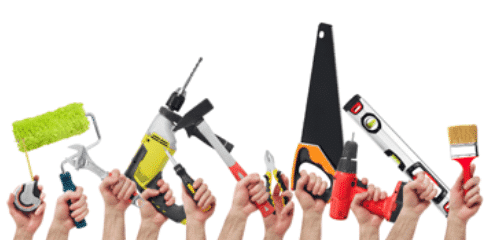Laminate Floor Fitters – Edinburgh

Laminate Floor Laying Service in Edinburgh
Book a reliable laminate floor fitter in Edinburgh for expert laminate installation.
Call HomeForce on 0131 315 0000, email us on info@homeforce.co.uk or complete the form on this page.
Read on for budget costs to buy & fit laminate flooring, some top tips to ensure perfectly laid laminate flooring and our view of the Pros & Con’s of fitting laminate flooring.
But what actually is Laminate flooring?
Laminate flooring has been around since the 1970’s. It’s a composite material that is most usually designed to simulate wood but can have many types of design.
Usually it “clicks” together (thus is sometimes referred to as “Click Flooring”) using tongue and groove ridges. It may, alternatively, or also, use a backing glue.
What do Laminate floor fitters in Edinburgh charge?
Laminate flooring itself can be bought for as little as £4 / sq m. We’d recommend caution when buying laminate at that price as it may be of poor quality. A more usual price would be between £8 to £15 / sq m.
When it comes to laminate fitting also allow for:
- Underlay from around £1 / sq m to £5 / sq m depending on the sound and heat insulating properties required.
- Edging bead: from £1.50 to £8 per meter.
- Door strips / threshold plates: From £10 to £30
A labour charge for laminate fitting will usually range from £10 to £15 per sq meter.
Factors affecting the cost:
- Shape and size of room (smaller, non square rooms are more expensive per sq m)
- Number of doors
- The direction the laminate is to be laid.
- Click only flooring or glued first.
- If laminate to be fitted under skirting boards or with edging beads.
Usually laminate fitters will provide a fixed cost for a room. This is based on the size of the room and how long they anticipate the laminate fitting will take. Always beware of quotes that seem too good to be true. They usually are.
Pros and Cons of fitting laminate flooring
Advantages
- Relatively easy – and so cheap or suitable for DIYers – to install compared to tiles or hardwood.
- Low maintenance requirements.
- Hard wearing / durable – less likely to mark than hardwood.
- The texture is such that it is “warm” underfoot compared to tiles or stone.
- Range of underlay offers various levels of heat or sound insulation
- Variety of designs offer aesthetic flexibility
- Hygienic with antimicrobial properties built by manufacturers.
Disadvantages
- Humidity in places such as kitchens or bathrooms can lead to warping.
- Water resistant rather than water proof.
- Relatively expensive to lift and relay if access beneath is required. Rarely goes down as well second time.
- Ranges frequently renewed so difficult to find same range again for repairs.
- Variable quality of product. Buy from reputable companies.
- May not be suitable for HMO properties (Check HMO Guidance)
- Not possible to sand and re-finish.
- More appropriate for use in larger, squarer rooms / not best in small rooms with multiple angles & corners.
Laminate floor laying tips
- An “expansion gap” of 5 to 10mm should be left between the flooring and any immovable object; laminate flooring will expand and contract as the heat and humidity of the room goes up and down.
- The expansion gap can be situated under skirting, though this involves significantly more work, but is more usually covered by “edging beading”
- If new laminate flooring and underlay is going to raise the level of your floor you may need to trim doors so they don’t drag on the floor. In kitchens trim kick plates so that they sit on top of the flooring.
- Manufacturers often recommend that laminate flooring be left to acclimatise in opened packs in the room it is to be laid in for 24 hours before laying.
- Keep a spare pack of the laminate you fit in case of any damage.
- A room will usually need to be cleared before a fitter starts.
Get a quote from a laminate fitter:
- Complete our Tradesperson Booking Form
- Tel: – 0131 315 0000
- Email: – info@homeforce.co.uk



